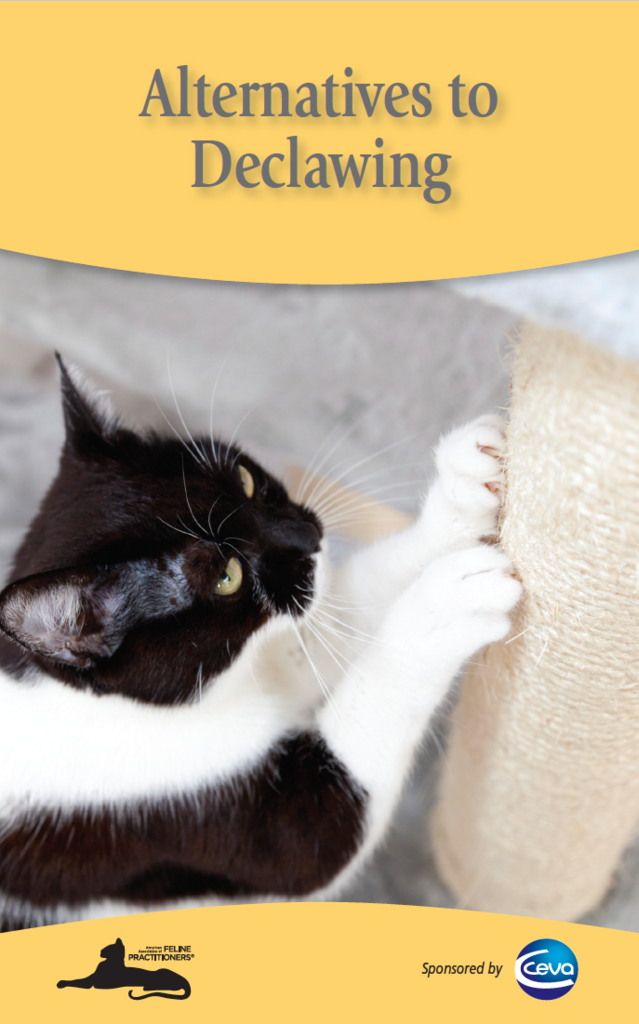
We strive to be a Cat Friendly Clinic:
At Maple Small Animal Clinic we love our canine and feline patients equally; however, we recognize that there are unique challenges and difficulties in bringing some cats to the veterinary clinic so we have gathered the following resource information to assist you:
Tips for getting your cat used to their carrier:
- We recommend that you introduce your cat to its carrier at a very young age. Allowing kittens and young cats to play in an open carrier, and taking cats for short rides in their carrier acclimates them to traveling and makes them far less fearful of being placed and carried in the carrier.
- Set your carrier out with the door open a few days before your trip to the Veterinarian. Cats are more comfortable with the familiar, and need time to adjust to the unfamiliar.
- Place your cats bedding, or items of your clothing in the carrier. Cats use their scent glands to mark items in their household. Having items with familiar scents in the carrier may have a calming effect. Consider use of synthetic feline facial pheromone (Feliway©) analog spray in the carrier at least 30 minutes prior to transport to help calm your cat.
- Cats do not learn from punishment or force. Give rewards to encourage positive behavior. Place treats in the carrier and encourage your cat to go in the carrier to get them. Likewise, rewards can be given to help your cat become familiar with the type of handling that may be encountered at the veterinarian (example – handling paws, ears and mouth). A treat is what is highly desireable to your cat, which may be in the form of food, play or affection. Be persistent and reward every time.
- If your cat usually resists going into the carrier face first, try putting your cat in tail first. Sometimes, it is easier if they don’t see where they are going.
- Remain calm. Cats can sense our anxiety or frustrations, which may cause them to become fearful or anxious.
- Finally, if your cat is very aggresive when you attempt to put it in the carrier, call our office and let our staff know, we will consult with your Veterinarian for specific advice for your pet.
Other Tips:
- When you make your appointment with us, let our receptionist know that your cat is usually anxious when coming to the veterinarian. We will make every effort to get you immediately into an exam room at your appointment time. If we can’t get you immediately into a room when you arrive we have an elevated shelf we can put your carrier on so your cat won’t be at eye level with any of our canine patients who may come in while you are in the waiting room.
Here is a short video from the Catalyst Council with tips for taking your Cat to the Veterinarian:
Here is a short video from the Catalyst Council on how to get your Cat used to its Carrier:
Here are some helpful handouts:
Cat Owner Educational Brochures
These educational client brochures can be downloaded or printed.
 |
Feline HyperthyroidismDownload Electronic Viewing |
 |
Alternatives to DeclawingDownload Electronic Viewing |
 |
Feline House-SoilingDownload Electronic Viewing |
 |
Your Cat’s Environmental NeedsDownload Electronic Viewing (Translated: German) |
 |
Vaccinations for Your CatDownload Electronic Viewing |
 |
Nursing Care for Your CatDownload Electronic Viewing |
 |
Getting Your Cat to the VeterinarianDownload Electronic Viewing (Translated: Spanish) |
 |
Friends for Life: Caring for Your Older CatDownload for Electronic Viewing and Print Ready Booklet Color |




